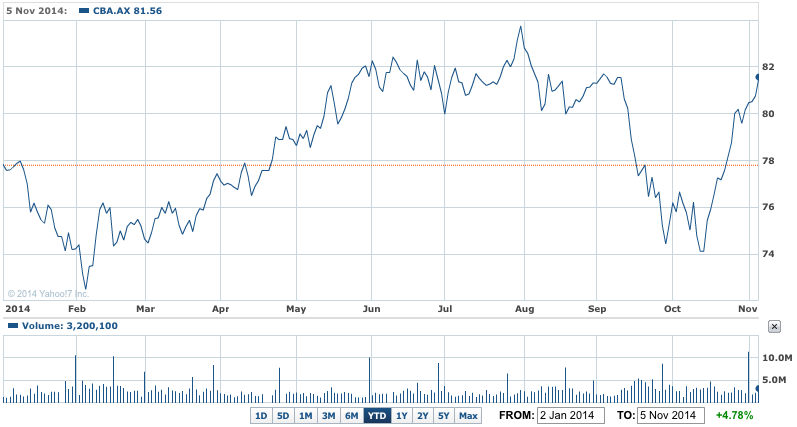The Commonwealth Bank’s (CBA) first-quarter earnings grew almost 10% to $2.3 billion, buoyed by customer growth and lower bad debts.
As strong as that seemed, the market wasn’t all that impressed with the shares ending up 0.9% at $81.56.
The market reckoned it wasn’t as good as the release suggested it was, but that scepticism lessened in late trading.
The net interest margin fell, much of the increase came from lower bad debt provisions (helped by the rise in house prices), while business lending was soft.
"Credit quality remained sound, with retail arrears flat to slightly improved and impaired assets lower at $3.1 billion.
"Total loan impairment expense was $198 million in the quarter, with strong provisioning levels maintained and the economic overlay unchanged,” the bank said.
The result compares with $2.1 billion for the same period last year and the bank said credit quality remained “sound” with impaired assets lower as many households continued to exploit the low cost of credit and pay off their loans ahead of schedule.
Growth had continued across the mortgage market, the lender said, having recorded slower cost growth than revenue in the quarter, which enhances profits.
"Overall business momentum was maintained," CBA said in a statement.
"In home lending, focus remains on profitable growth in a competitive market, with strong new business levels balanced by higher repayment activity in a low interest rate environment."
CBA YTD – CBA on track

In a sign CBA is also benefiting from the low charges for bad debts that have inflated bank profits across the industry, its total expense for impaired loans as a share of its lending book continued to decline in the quarter, to 0.13% compared with 0.16% in the year to June.
The bank also pointed to the challenge from fierce competition in the $1.3 trillion mortgage market.
CBA said its net interest margin was "marginally lower" because of competitive pricing impacts, which had more than offset the benefit it received from lower wholesale funding costs.
Commercial lending growth has also been relatively soft, it noted, while the assets under management in its wealth management arm had risen by 3.5% during the quarter.
The banks’s tier one capital ratio was down to 8.6% from 9.3%, due to the payment of its final dividend (a normal seasonal event).













